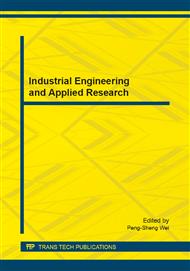p.402
p.409
p.413
p.417
p.421
p.425
p.429
p.433
p.438
Crack Initiation Observation in Early Stage of Rolling Contact Fatigue of SUJ2 Using a Single-Ball Apparatus
Abstract:
A single-ball RCF testing machine was used in order to investigate crack initiation of SUJ2 material at early stage of fatigue. This machine enables observation of a full cross section by sectioning the specimen only once. The RCF tests were carried out under a Hertzian stress of 5.3 GPa, at 3000 rpm. All of the cracks initiated from non-metallic inclusions on 300 mm2 sized area were counted, and the relation between the number of cracks and their initiation depths was drawn. Furthermore subsurface shear stress distribution was calculated. Empirical data of the crack distributions and subsurface stress distribution was compared. It was found that the crack starts growing during 3.3×104 - 1.0×105 cycles by the subsurface shear stress.
Info:
Periodical:
Pages:
421-424
Citation:
Online since:
August 2014
Authors:
Price:
Сopyright:
© 2014 Trans Tech Publications Ltd. All Rights Reserved
Share:
Citation:


